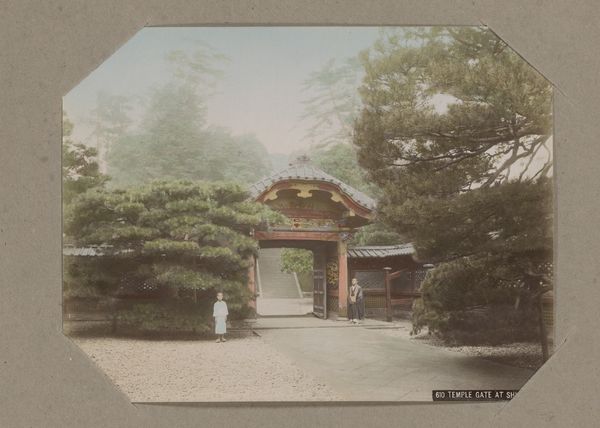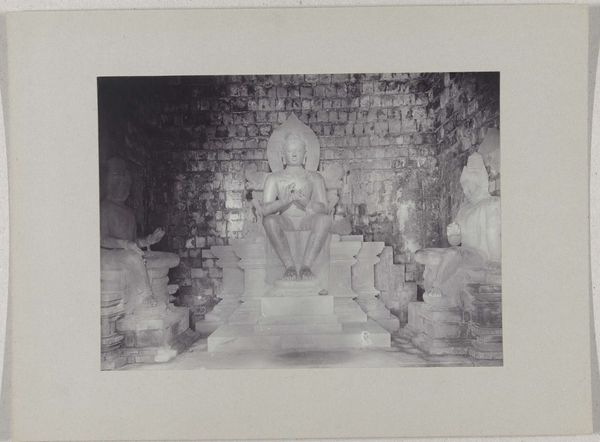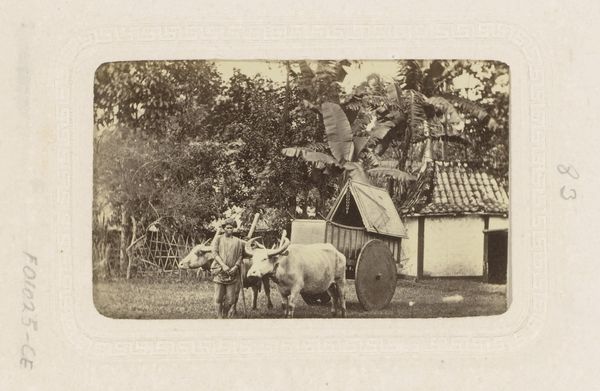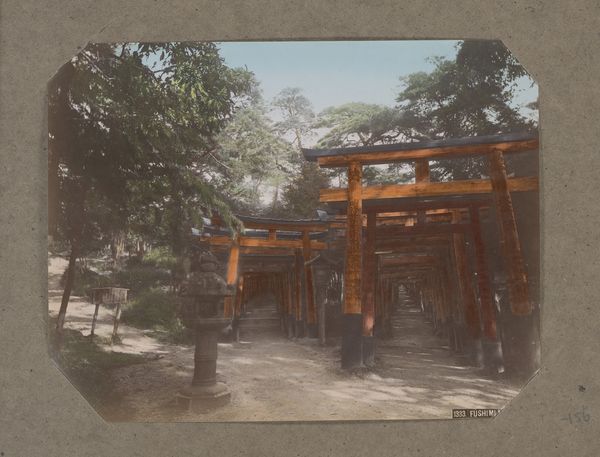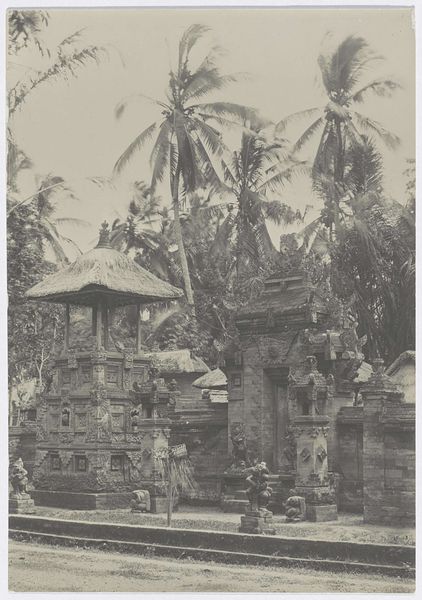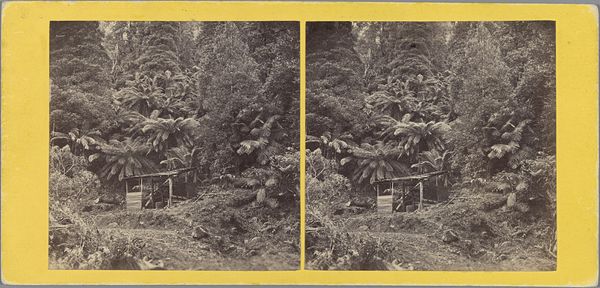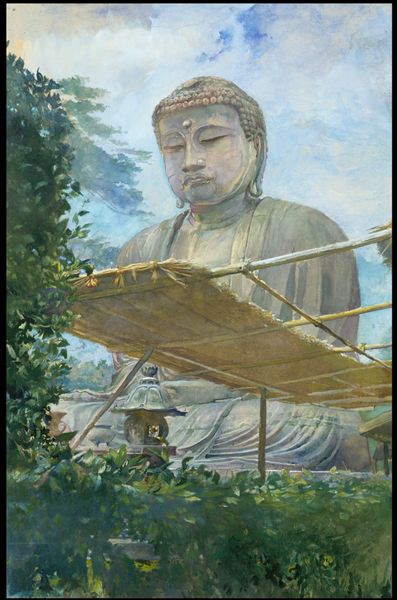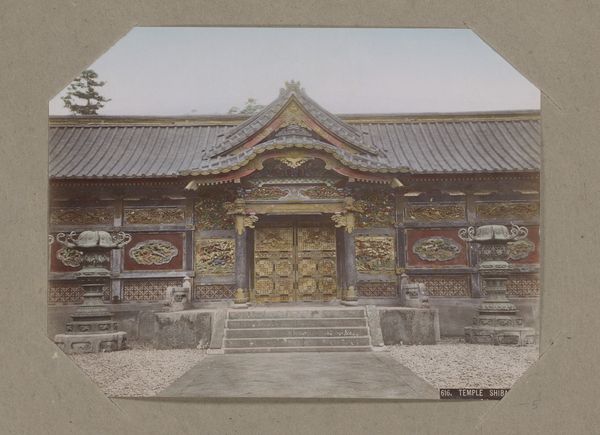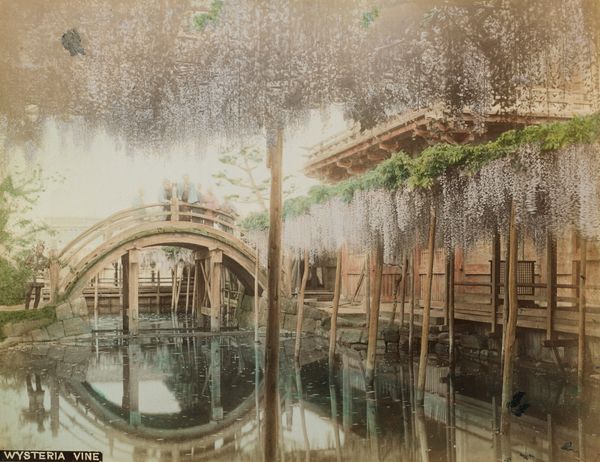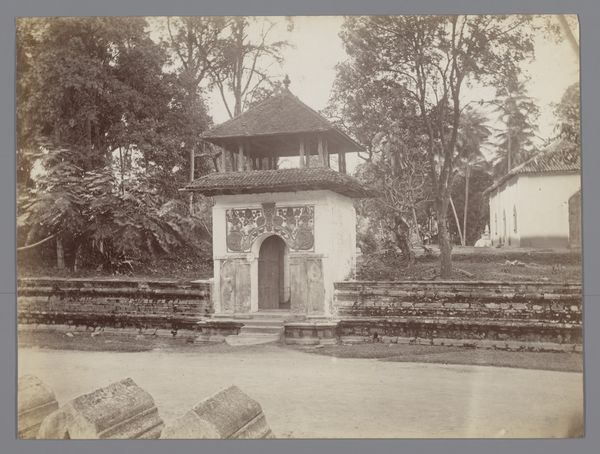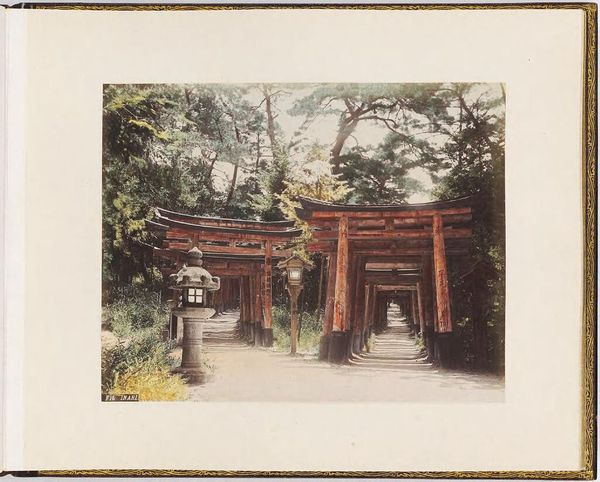
Daibutsu (“Grote Buddha”), bronzen beeld in de Kotoku-in Tempel in Kamakura c. 1870 - 1900
0:00
0:00
bronze, photography, photomontage
#
landscape
#
bronze
#
photography
#
photomontage
#
orientalism
Dimensions: height 198 mm, width 266 mm
Copyright: Rijks Museum: Open Domain
Editor: So, we’re looking at "Daibutsu (Grote Buddha), bronzen beeld in de Kotoku-in Tempel in Kamakura" a photo from around 1870-1900 by Raimund von Stillfried. It's a stunning photograph. The sheer scale of the Buddha statue is imposing, but something about the muted colours creates a kind of serene atmosphere. What strikes you most when you look at this? Curator: What immediately stands out to me is how this photograph participates in a longer history of Orientalism. Von Stillfried, a European photographer, is capturing a potent symbol of Japanese culture – but through a distinctly Western lens. Think about how photographs like this circulated. Who was the intended audience, and what ideas about Japan were they meant to reinforce? Editor: I hadn't thought about that! It’s easy to get caught up in the aesthetic appeal, but that shifts my perspective. What specific elements are indicative of this "Western lens"? Curator: The very act of isolating the Daibutsu, framing it almost as a monumental object or relic, speaks volumes. It reduces a complex religious and cultural symbol to an exoticized image for consumption. And consider the slight photomontage elements: they are often used to heighten the picturesque quality. How do you think that affects our understanding? Editor: I see what you mean. It transforms a sacred space into something…almost like a tourist attraction. The history behind its creation as propaganda is much richer than how I first perceived the image as art. Curator: Exactly. And by acknowledging the power dynamics at play, we can appreciate the artistry while remaining critical of the historical context. Editor: That really gives me a new appreciation, not just for this piece, but how images are framed and presented overall. Curator: It shows that art, even photography, is never neutral; it’s always a product of the time and the perspectives shaping it.
Comments
No comments
Be the first to comment and join the conversation on the ultimate creative platform.

